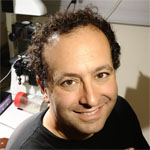A lot has been written about the genetic test for ACTN3 being marketed by ATLAS Research as a way to direct ones children towards the appropriate athletic endeavors since a story on the test appeared in the NY Times last week. Daniel MacArthur, in particular, has done a great job explaining the science behind the test and what it can and can not tell us here and here.
Various people are also issuing the usual lament about how journalists don’t understand science, and some have wondered why the NYT chose to write about this test now given that a similar test have been available overseas for months. I haven’t, however, seen anyone comment on how awful the actual NYT article was.
Why on Earth was this story on the front page of the NYT? Some random company trying to hock a bogus DNA test clearly hooked an ambitious NYT sports reporter with a story about how DNA could predict whether a kid was going to be a good athlete. But what would make this press release into a news story? Maybe if people were actually using the test…
The Times clearly wants us to think they are – they put a picture of a cute kid having his cheek swabbed right at the top. But notice that nowhere in the article does it say that ANYONE has taken the test. Two parents are quoted offering commentary on the test, but neither says that their kid has or will be tested. And the photo caption is telling – no name and nothing about the kid being tested, just the oddly generic “DNA collected by swabbing the inside of a cheek can be used to determine whether a child is likely to excel at a particular sport.”
As far as I can tell, the reporter, Juliet Macur, thought the story sounded kind of interesting and flew to Boulder to meet with the people from the company. Then they went down the hall to Boulder Indoor Soccer (which is mentioned in the article and conveniently shares a building with the company behind the test – one assumes they are somehow linked) and asked a few parents what they thought of the test. One of them asked the obvious questions – who’s behind it and what will it set me back, which get’s transformed into:
When Donna Campiglia learned recently that a genetic test might be able to determine which sports suit the talents of her 2 ½-year-old son, Noah, she instantly said, Where can I get it and how much does it cost?
The implication is clearly that she’s really excited about the test, but I think it’s a misleading presentation of an innocent question. Of course sports reporters make their bread and butter sensationalizing banal sideline banter, but I expect higher standards from the front page although I guess that’s what you have to do when the meat of your story is a marketing pitch, quick reaction from two parents, and a staged photo.
The deceptive presentation continues with the obligate quotes form experts:
Dr. Stephen M. Roth, director of the functional genomics laboratory at the University of Maryland’s School of Public Health who has studied ACTN3, said he thought the test would become popular. But he had reservations.
“The idea that it will be one or two genes that are contributing to the Michael Phelpses or the Usain Bolts of the world I think is shortsighted because it’s much more complex than that,” he said, adding that athletic performance has been found to be affected by at least 200 genes.
Don’t you think he meant it as a BAD thing that the test would become popular? The way the paragraphs are structured implies the opposite.
But what really galls me about the piece is the way in which giving it this much play undermines human genetics in the guise of promoting it. Let me just say that I think the science behind ACTN3 is, while by no means perfect, actually pretty good. The ACTN3 X allele really does seem to affect muscle performance, and seems to be generally incompatible with being an Olympic calibur power athlete. However the way the test is being marketed is clearly bogus – little Johnny or Jenny had like a 1 in 1,000,000 chance (and that’s being pretty generous) of being an Olympian in a power sport before the test and either 1 in 800,000 or 1 in 2,000,000 afterwards. Not so useful.
The story actually does an OK job of discounting the value of the test – but that’s why I think it’s a bad thing for human genetics. Given that no one is actually taking the test yet, the only real excuse for publishing the story on the front page is as a sort of expose of genetic charlatans. The reporter doesn’t directly say it, but one gets a clear sense at the end of the day that the test is not useful. And front page stories in major newspapers about bogus genetic tests make genetic testing as a whole seem useless. This didn’t need to happen – the NYT should have realized they had a non-story about a non-test and buried it.
 I'm a biologist at UC Berkeley and an Investigator of the Howard Hughes Medical Institute. I work primarily on flies, and my research encompases evolution, development, genetics, genomics, chemical ecology and behavior. I am a strong proponent of open science, and a co-founder of the
I'm a biologist at UC Berkeley and an Investigator of the Howard Hughes Medical Institute. I work primarily on flies, and my research encompases evolution, development, genetics, genomics, chemical ecology and behavior. I am a strong proponent of open science, and a co-founder of the 